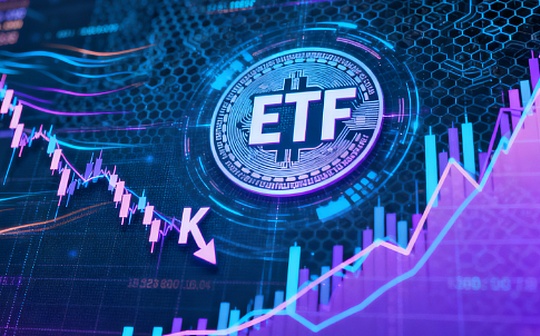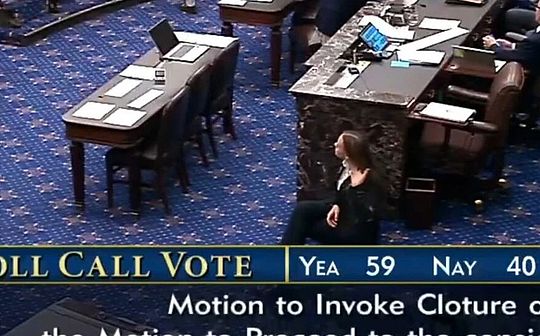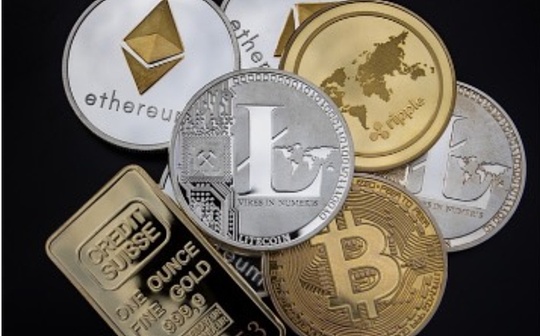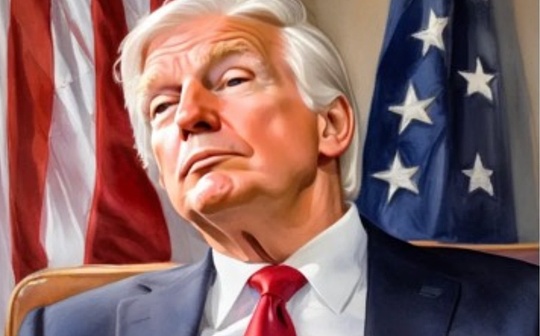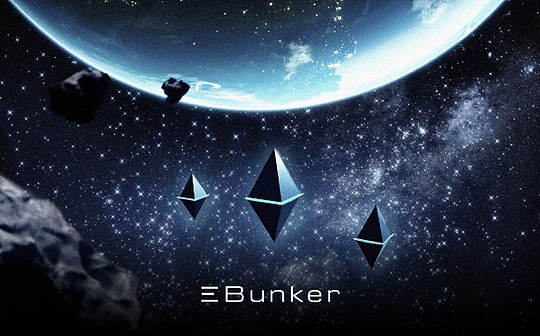
When US regulation lights up, traditional Wall Street institutions quietly sweep the goods, Vitalik has accumulated several Ethereum L1 expansion ideas, while the Fed secretly shifts its pointer to a rate cut—all grand narratives are converging on the same main line: Ethereum.
Regulatory thawing, technological iteration, macro wind direction and “ultrasonic” monetary mechanism four-wheel drive are paving an acceleration runway for the next 3–18 months.
The net inflow curve of ETH ETFs continues to hit a new high, the fuel fee on the block browser is about to exceed 5 million, and Ethereum returns to the weekly MA200; the on-chain staking rate is approaching 30% and is still rising. From the North American Ethereum version of micro-strategy SharpLink that wrote ETH into the balance sheet, to Robinhood’s announcement that Ethereum L2 can be used in the European region to trade on-chain US stocks, and then to the Hong Kong announcement that ETH is accepted as a proof of immigration assets, Ethereum’s core value is becoming a global consensus.
Political game, capital momentum, agreement improvement, foundation reform and iteration roar simultaneously – there is only one key question left in the market: Are you ready?
Next10The big reason is to disassemble the layer by layer how ETH leaps from industry consensus to a burst engine across cycles.
1. The biggest regulatory favorable and policy introduction in history
The drastic shift in U.S. regulatory stance has brought new optimistic expectations to Ethereum.Paul Atkins, the new chairman of the Securities and Exchange Commission, expressed support for crypto innovation — a stark contrast to the Gary Gensler era.
Atkins has withdrawn the Gensler era’s proposal for decentralized finance and self-custody in favor of an “innovation-first” strategy.At a recent roundtable, Atkins even stressed that developers should not be punished for writing decentralized code.
This was a major policy turn: The SEC under Gensler once considered Ether as “unregistered securities” and investigated it.Today, under the leadership of supporting crypto, Ethereum enjoys a clearer regulatory prospect.As decentralized finance gains recognition from the top — Atkins calls self-custody “a fundamental value of the United States” — the threat of hostile regulation has significantly weakened, greatly encouraging institutions to participate in the Ethereum market.
In addition, recent U.S. legislative trends, especially the Senate’s GENIUS Act, mark a key turning point in the clarity of the regulation of crypto-dollar stablecoins.
These bills are designed to establish a clear framework for payment stablecoins issuers, and the adoption of Ethereum will be strongly driven, given that it is the main settlement layer for regulated stablecoins such as USDC and PYUSD, and one of the most important public chains for the largest stablecoins USDT:
Comprehensive stablecoin framework
The “Guiding and Establishing a US Stablecoin National Innovation Act (GENIUS Act) was successfully passed in the Senate in June 2025 with bipartisan support.It imposes strict standards on stablecoin issuers, requiring 100% cash or Treasury reserve support, monthly audit disclosures, and bankruptcy protections for token holders.The key is that it allows banks and non-bank companies to issue stablecoins under license and to be regulated.
Ethereum as a stablecoin infrastructure
By explicitly legalizing and regulating stablecoin issuances, these bills validate the dollar-backed tokens that exist primarily on the Ethereum network.For example, Circle’s USDC and PayPal’s PYUSD are ERC-20 tokens on Ethereum, relying on Ethereum’s security and global coverage.The federal framework consolidates Ethereum’s role as a settlement backbone.
Legislators themselves acknowledge that well-regulated stablecoins can “strengthen the dollar’s position as the world’s reserve currency” while maintaining the United States’ competitiveness.This mission essentially utilizes public networks like Ethereum (USD stablecoins circulate in DeFi and payments).
DeFi and US dollar liquidity
Ethereum’s DeFi ecosystem, from lending protocols to decentralized exchanges (DEXs), runs on stablecoin liquidity.By legalizing stablecoins, the GENIUS Act effectively ensures the foundation of DeFi.Participants can use assets like USDC with more confidence without fear of sudden blows or legal ambiguity.
This encourages institutions to participate in DeFi (e.g., using stablecoins for transactions, borrowing, payments).In short, the legislation connects traditional finance (TradFi) with DeFi: it invites banks, payment companies and even tech companies to issue and use Ethereum-based stablecoins, while providing guardrails (KYC/AML, audit, redemption rights) to reduce systemic and legal risks.The ultimate effect is to form a supportive policy environment that anchors Ethereum’s role in the digital dollar economy.
Finally, another encryption bill, the transparency bill, CLARITY Act (H.R. 3633), has also made quite smoothly in recent times.
The CLARITY Act was first promoted by the House of Representatives.On June 13, 2025, the bill was passed on the Financial Services Commission and the Agricultural Commission with 32:19 and 47:6 respectively.At present, the bill has entered the Rules Committee process, waiting to be submitted to the House plenary for vote.
The CLARITY Act eliminates the biggest doubt hanging over Ethereum in the United States: whether ETH belongs to securities.
By explicitly classifying ETH (and any sufficiently decentralized Layer-1 token) as a “digital commodity” regulated by the CFTC, the bill excludes the possibility of retroactive enforcement by the SEC, creates a safe harbor for secondary transactions, and clarifies when developers and validators do not belong to “brokers.”This combination dramatically lowers the regulatory risk premium, paves the way for Wall Street products related to spot and pledged ETH, and gives the green light for DeFi to continue to innovate online.
In summary, given Ethereum’s dominance in custody of stablecoins and DeFi, this multiple regulatory green light greatly strengthens the prospects for medium-term adoption, transaction growth, and Ethereum’s integration into the traditional financial system.
2. “ETH version of MicroStrategy” leads the organization to compete for thousands of sails
More and more big-money players are viewing Ethereum as a strategic asset, a trend accelerated by a compelling move by SharpLink Gaming.Nasdaq-listed company SharpLink recently completed a landmark allocation of funds: it acquired 176,000 ETH (approximately US$463 million) and used Ethereum as its main reserve asset, becoming the world’s largest public ETH holder overnight.Currently, more than 95% of this asset has been pledged to earn profits and enhance the security of the Ethereum network.
The CEO of SharpLink called it a “iconic moment” and explicitly compared the strategy to MicroStrategy’s Bitcoin strategy, which was only replaced by Ethereum.This bold financing is strongly supported by Joseph Lubin, founder of ConsenSys and one of the eight co-founders of Ethereum, who has served as the new chairman of SharpLink.Lubin said on different occasions: “SharpLink’s bold ETH strategy marks a milestone for institutions to adopt Ethereum,” and pointed out that “ETH not only has the attributes of Bitcoin-style store of value, but also has become a truly productive reserve asset due to its predictable scarcity and sustained returns. As Ethereum becomes increasingly the underlying architecture of the digital economy, ETH is also regarded as a strategic investment to the future financial architecture.”
Cryptocurrency bank suddenly became a trend: SharpLink’s success (its stock price soared 400% after the announcement) prompted peers to compete to emulate the strategy.Publicly listed company Bitmine Immersion (BMNR) also recently announced that it would raise $250 million specifically for ETH purchase, positioning as an “Ethereum Treasury Strategy Company”.Bitmine, led by Fundstrat co-founder Tom Lee, its stock price soared by more than 3,000% within a week after the announcement, attracting investment from multiple front-tier institutions such as Founders Fund, Pantera, and Galaxy.
Meanwhile, observers report that several companies, including Europe, are also exploring reserve allocations focused on Ether.While some forward-looking companies such as BTCS Inc. had already started holding ETH before this, SharpLink’s move represents a new height of mainstream adoption.
For Ethereum, the accumulation of ETH by more and more corporate treasury is undoubtedly a positive thing – this locks up supply (especially because most tokens will eventually be staked) and sends a signal of institutional confidence.
At the same time, institutions are also making arrangements through funds: the first batch of Ethereum futures ETFs were launched at the end of 2024, and the approval of spot Ethereum ETFs is just around the corner, which may release billions of dollars in new demand.”I think it’s valuable to launch an Ethereum ETF. It’s just the first step towards asset tokenization, and I really believe that this is where we are going.”
It can be seen that Ethereum is increasingly regarded by listed companies and funds as strategic investments and reserve assets, similar to the development trajectory of Bitcoin in the previous cycle.
3. Weekly level technical indicators return to MA200
Ethereum’s price chart shows multiple bullish technical signals, indicating that the trend may reverse upward.
After a long downturn, in May 2025, ETH re-established the weekly MA200 – one of the most classic indicators of the bull return.
From a technical point of view, Ethereum’s overall market structure has improved: a series of lows are gradually replaced by higher lows and breaking through long-term downward channels.
From May to June, ETH is above the 200-week moving average, which has become the support “launch” of the 200-week moving average (about $2,500) — ETH is bottoming above it, similar to the recovery phase of the past cycle.
Momentum indicators confirm the positive structure: weekly candlestick charts show long solids and shallow shadows, indicating strong buying and less selling pressure during pullbacks.The upward slope of the key moving average and the recovery trend of the MACD indicator show an enhanced upward action energy.In addition, we also see bullish chart patterns – for example, several analysts pointed out that a potential bull flag pattern appeared on the ETH chart, which, if confirmed, may point the upward target to more than $3,000 in the medium term.
This shows that traders are confident in ETH, believing that the downside risk has been effectively controlled and that the minimum resistance path is upward.Overall, Ethereum’s technology has regained its 200-week moving average, coupled with higher highs and lows, and enhanced momentum, indicating that the asset is in the early stages of a significant bullish reversal, supporting a positive outlook for the next 3 to 18 months.
4. Ethereum Pectra upgrade roadmap
Ethereum’s technology roadmap is steadily advancing and continuously enhancing its basic value.The Pectra upgrade (i.e. Prague + Electra hard fork) launched on May 7, 2025 marks a new phase of Ethereum, with 11 EIPs covering improvements from smart wallets to scalability.
The most iconic changes include: increasing the staking cap for a single validator from 32 ETH to 2048 ETH and recalibration fees to significantly increase Layer-2 throughput.These changes reduce costs, improve L2 performance, accelerate the adoption of optimistic Rollups and zk-Rolups in the ecosystem, and clear barriers for future L1 expansion.
At the same time, Pectra upgrades support account abstraction, such as gas-free payments, batch transactions, etc., which lays the foundation for the large-scale adoption of stablecoins in the future and further widens the gap in user experience and flexibility with other public chains.As Ethereum core developer Tim Beiko summed up on April 24: “A highlight of Pectra is EIP-7702, which enables use cases such as bulk transactions, Gas payments and social recovery without the need to migrate assets.”
At the main network level, Ethereum is also gradually increasing Gas Limit, from the initial 15 million to 36 million, and further increasing to 60 million in the future, bringing a 2–4x increase in the number of transactions that Ethereum L1 can handle per second, reaching 60 TPS.It can be predicted that Ethereum is expected to make TPS exceed 3 digits after multiple expansions.Ethereum researcher Dankrad Feist even proposed: “We have a blueprint to increase Gas Limit by 100 times in four years, which in theory could increase Ethereum TPS to 2,000.”
At the same time, Ethereum is actively promoting zero-knowledge (ZK) integration as part of the “Surge” roadmap phase.Upgrades like Pectra (and the upcoming Fusaka) lay the foundation for a full ETH ZK-based and ZK-version verification light client.
Obviously, Ethereum’s core protocol is rapidly evolving, putting it technically always ahead of its competitors.
5. The macro environment is favorable to interest rate cuts
Changes in the macroeconomic environment will benefit Ethereum in the coming months.After a year of high interest rates, the market expects the Federal Reserve to turn to a rate cut, which could put the benchmark yield below the return on ETH staking.
According to CME Fed Watch forecasts, the federal funds rate will drop to 3.25% or less by mid-2026.Meanwhile, Ethereum’s on-chain staking yield (currently at about 3.5% annualized interest rate) is expected to rise due to increased network activity and handling fees.
The convergence of this trend has created a “double impact effect”: traditional risk-free yields decline, while Ethereum’s local yields rise, which may turn the spread between ETH pledges and Treasury yields into positive values.
If Ethereum staking provides a significantly higher return than U.S. Treasury or savings account, it will enhance the attractiveness of ETH as a high-yield and liquid asset.Not only does pledge bring solid returns, ETH itself also has upward potential, which is an attractive combination for investors who are difficult to obtain returns elsewhere.
Furthermore, it is well known that looser Fed policies (and improvements in inflation outlook) tend to weaken the dollar, which historically favors all crypto assets.
Such a loose monetary policy macro trend will be very beneficial to ETH in the next 3 to 18 months.
6. Staking: On-chain staking and ETF staking are both in pairs
“Ethereum staking has become the foundation of cybersecurity and economic models, and if the United States approves staking ETFs, it may bring billions of dollars in new institutional demand.”
Ethereum’s transition to Proof of Stake (PoS) has opened up new trends around staking, and U.S. regulators are gradually open to investment products that use pledge proceeds.With the SEC approved multiple spot Ethereum ETFs in 2024, it is ready for the next phase of innovation: a U.S. staking ETF that provides exposure to ETH plus staking returns.
So Ethereum’s future staking will become a two-pronged approach:
1. Traditional institutions pledge:How a staking-enabled ETF may affect the ecosystem and value of Ethereum;
2. On-chain protocol pledge:Agreements like Lido and Ether.Fi have the role of popularizing staking.
Growing staking participation: Ethereum staking has experienced strong growth after Merge and Shanghai upgrades.As of the first quarter of 2025, approximately 28% of the total ETH supply was pledged in the validator node, a record high, reflecting strong confidence in the network.
On-chain staking longs and cracking centralized staking
It is worth noting that ETH Staking has not gone centralized: Lido Finance is still the largest single staking provider, but its once dominated market share (about 30% or more) has not continued to be concentrated.The reason is that Lido personally promoted the two major sectors of Community Pledge (CSM) and DVT Pledge (SDVTM), which gradually increased its share in the Lido Staking pool, thus shattering the past doubts that ETH Staking will soon become centralized.
At the same time, the pledge landscape is becoming more diversified, with ETH pledged by new platforms like Ether.Fi increasing by about 30% in the past six months, and the net pledge increase in the past month alone has exceeded 310,000 ETH.In particular, strategies related to revolving lending have made Ether.Fi show how innovation can make Ethereum staking more accessible and capital-efficient: users can easily participate with small amounts, maintain liquidity, and even amplify returns, all of which encourage wider staking participation.
Pledge returns have changed investors’ considerations – ETH is no longer a non-income asset, but is gradually similar to productive assets. The returns can be comparable to dividends or interest, and even answers Buffett’s doubts about gold and Bitcoin assets that year’s no interest.Overall, the amount of ETH pledged remains at record highs, suggesting that holders view pledge as an attractive long-term strategy (making profits while protecting the network) rather than short-term speculation.
Expected U.S. staking ETFs and their impacts
With spot Ethereum ETFs already traded in the United States, the natural progress is to launch an ETF that not only holds ETH but also participates in staking for profit.Such a product would be groundbreaking, providing traditional investors with exposure to ETH price appreciation and about 3–4% annualized pledge returns in a single, regulated tool.If the U.S.-backed staking ETF is approved, the impact on Ethereum could be significant:
Increased demand and reduced circulation: Staking ETFs may attract institutional capital and retirement accounts that prefer ETF convenience.This locks more ETH in the staking contract, effectively reducing the liquidity supply in circulation, and a popular ETF may impose a “push-back feeling” on the ETH price.
Verify the legality of pledge: In particular, the new SEC chairman made it clear that “verifier, pledge as a service” was not covered by securities jurisdiction, which would send a strong signal to the US approved pledge ETF.
Industry experts such as James Seyffart of Bloomberg and ETF analysts at The ETF Store predict that by the end of 2025, the SEC may allow staking to ETFs in major assets such as Ether.In short, US staking ETFs seems to be a question of “when, not if”.
Essentially, it standardizes pledges into a kind of “crypto dividend” or bond-like interest in traditional investors.This mainstream acceptance can expand Ethereum’s investor base, attracting not only growth investors, but also investors seeking returns and income.
In summary, Ethereum staking has become the core pillar of the network value proposition, and the emergence of US staking ETFs may change the rules of the game.This growing staking base reduces circulating supply and encourages long-term holdings, supporting the price of ETH.If regulators allow ETFs to consolidate stakes, it will invite a new class of investors to participate in Ethereum’s earnings within a familiar framework, which may boost demand for ETH and strengthen its position as a earning asset.
Allen Ding, founder of Ebunker, said: “As Asia’s top staking service provider, I want to talk about the potential of Ethereum from a node perspective. Ethereum currently has more than 1 million nodes and thousands of node entities, and is one of the most decentralized protocols in the entire blockchain industry and even all organizations in human society.
Although Ethereum has performed poorly in terms of application ecosystem prosperity and user growth in recent years, I believe that the long-term reputation accumulated in terms of decentralization and security is its real and unchallenging moat.We have recently seen many commercial companies such as Robinhood still choose ETH L2 to release its on-chain securities, which can give us a glimpse of the indestructible position of Ethereum in people’s hearts.
So, I boldly say that Ethereum cannot kill — both in terms of literal and extended meaning.”
7. Layer2 adopts a surge in 10,000 chains to compete
Ethereum’s strategy of scaling through the Layer-2 network is achieving significant results.The L2 strategy eliminates many new “Ethereum killers” that may have emerged.
Instead of competing with every emerging blockchain, Ethereum empowers them as L2, and even large companies join in.For example, Sony launched its own Ethereum L2 blockchain, Soneium, aims to introduce Web3 into the gaming, entertainment and finance sectors.Sony’s platform will adopt Optimism’s OP Stack technology, inheriting Ethereum’s security and providing customized scalability.This is the first time that global consumer technology giants have directly built a platform based on Ethereum’s L2 framework, which has greatly verified Ethereum’s strategy.
Robinhood has also joined the ranks recently, announcing its plans to build its own L2 blockchain based on Arbitrum to support its new business lines such as tokenized stocks and crypto-perpetual contracts launched in the EU.As one of the most popular financial platforms in the United States, Robinhood’s addition marks the continued attraction of Ethereum’s L2 strategy to mainstream fintech companies.
Meanwhile, activity has surged since its launch in 2024.Base handles more than 6 million transactions per day, and even surpasses traditional L2s like Arbitrum in usage.In fact, Base accounted for approximately 60% of all L2 transactions by the end of 2024, demonstrating the potential for Ethereum L2 to achieve large-scale expansion with the support of large platforms.
Not to be outdone, Binance also adopted Ethereum’s technology – its opBNB chain is based on Optimism’s L2, achieving more than 4,000 TPS in testing and processing 35 million transactions during beta.By using Ethereum’s EVM and OP Stack, opBNB extends Ethereum’s reach to the BNB Chain ecosystem while maintaining compatibility.
The conclusion is: Ethereum’s network effect is so powerful that it transformed potential competitors and large enterprises into part of its L2 hyperstructure at an early stage.This extensive L2 adoption (from Sony to Robinhood, Coinbase to Binance) drives more use and fees back to Ethereum, highlighting its position as the preferred settlement layer.
8. Dual adoption of mainstream and political
Apart from prices, signals from a wider ecosystem suggest that Ethereum is increasingly integrated into the structure of technology, business and even politics.
A compelling example is the Trump family’s entry into the crypto space through the new platform of World Freedom Financial (WLFI).WLFI wants to bring high-yield crypto services and digital asset trading — essentially bringing the concept of DeFi to the public.
Trump Jr., son of Trump, publicly predicted that WLFI has the potential to “reshape DeFi and CeFi and revolutionize the financial industry” and emphasized: “We are just starting.” Before and after the tweet, WLFI spent $48 million to buy ETH to support its DeFi business.
The involvement of the Trump family — they reportedly owned a large portion of WLFI and even appointed Trump himself as a “principal crypto advocate” — suggests that even traditional conservative figures are now starting to see the value of Ethereum-based finance, which can be seen as an indirect endorsement of Ethereum technology.
At the same time, the attitudes of institutional investors are also undergoing essential changes.
In June 2025, the net inflow of Ethereum spot ETF exceeded US$1.1 billion, setting a single-month high since 2025, accounting for more than 27% of the current cumulative net inflow (US$4.18 billion), indicating that institutional funds are rapidly and large-scale entry into the Ethereum market.More importantly, this is not a short-term capital movement, but a continuous allocation trend:
As of June 12, 2025, Ethereum spot ETF has recorded positive capital inflows for 19 consecutive trading days, breaking the continuous net inflow record in the history of crypto ETFs; among them, the single-day net inflow on June 11 was as high as US$240 million, which not only far exceeded the US$165 million of Bitcoin ETFs during the same period, but also highlighted that the market’s preference for ETH is increasing.
This series of changes in capital flows sends a clear signal: institutions are no longer just “focusing” on Ethereum, but firmly “configuring” Ethereum.
The logic behind it is not complicated:
-
Ethereum has a diversified income structure (staking income, MEV capture, L2 split profit),
-
Have more efficient technology upgrade paths (such as EIP-4844, modular architecture),
-
And a continuously leading developer ecosystem and application vitality.
For institutions, ETH is no longer just a substitute for Bitcoin, but more like a “proof of equity in the digital financial system” – representing the underlying interests of global online finance in the future.This shift in role positioning has driven ETH to gradually become one of the core assets in mainstream financial allocation.
Morgan Stanley analysts recently reiterated: “If Ethereum can continue to upgrade smoothly, more institutional investments (such as a new round of ETFs) will continue to drive ETH prices up. We still stick to the bold long-term goal of $15,000.”
In addition, this also highlights the development history of Ethereum: from being ignored by regulators and traditional forces to being adopted by the US president today.Other signals abound in the ecosystem: Like PayPal launched Ethereum-based stablecoin (PYUSD), Visa is using Ethereum to settle USDC payments.
In addition, mainstream adoption in other countries and regions outside the United States is also continuing to accelerate.
Since 2021, emerging markets in Europe, Asia and the world have also actively adopted Ethereum in the fields of policy, finance and technology:
-
Europe: After the MiCA regulations come into effect, Deutsche Bank, BNP Paribas, etc. will use Ethereum as a digital bond issuance and settlement platform.French asset management giant Amundi made it clear: “Ethereum is the core of our digital securities strategy.” In 2023, the London Stock Exchange of the United Kingdom (LSE) announced its support for the listing of digital assets based on Ethereum.The SIX exchange located in Switzerland will launch Ethereum spot and derivatives from 2022.
-
Asia Pacific: In 2024, Hong Kong spot ETH ETF will be listed and supported by Staking. Compliant exchanges such as HashKey and OSL use Ethereum as the underlying asset custody.Singapore DBS Bank will launch a pilot project of Ethereum DeFi liquidity pool from 2022, with ETH as the core collateral.Japan’s Mitsubishi UFJ leads Progmat Coin, and the Ethereum-compatible architecture issues Japanese yen stablecoins.All eAUDs in Australia are Ethereum-compatible with EVMs.
-
Latin America and the Middle East: Brazil’s central bank CBDC, the UAE, Abu Dhabi promotes asset tokenization and digital identity, with the first choice of Ethereum and L2 platforms.
-
Africa: The Central Bank of Nigeria cooperates with Consensys in 2022 to promote the eNaira national payment system based on the Ethereum architecture.
These cases show that whether in Europe and the United States, Asia, the Middle East, and Africa, Ethereum has become the preferred underlying layer for digital asset issuance, asset custody, compliance pilot projects and corporate innovation.
As more and more governments, fintech companies and enterprises around the world integrate Ethereum into their actual business, the actual demand and actual implementation of ETH will further improve the supply and demand structure and provide broader space for the upward cycle in the next 3-18 months.
9. Vitalik’s continued promotion and reform of the Ethereum Foundation
Not only has Ethereum been constantly making breakthroughs in the technology and market levels, but the organizations and thought leaders behind it have also entered a new stage of development.Vitalik’s continuous research, foundation reshaping, the establishment of the Etherealize department, and the collaborative evolution of L1 and L2 will jointly promote the Ethereum ecosystem to move forward in a more mature and influential direction.
Vitalik: The only crypto leader after Satoshi Nakamoto
Vitalik Buterin is known as “the only true god in the post-Samoto era”.Not only is he the founder of Ethereum, he continues to influence the ecosystem as an industry research pioneer and a social media giant V.Currently, his focus includes:
-
ZK strategy: Vitalik establishes zero-knowledge proof (ZK proof) as the core technology main line for Ethereum in the next decade.He continues to push ZK to prove its dominance in scaling and security, while stressing that Ethereum cannot rely too much on a single technology route.Although the industry has achieved breakthroughs such as real-time ZK proof, Vitalik also reminds that performance optimization, auditability and ease of use are still shortcomings, and ZK proof will play a key role in improving Ethereum efficiency and security for a long time.
-
RISC-V + ZK-EVM performance innovation: Vitalik advocates the long-term goal of universal RISC-V virtual machines, believing that if the mainnet can achieve this upgrade, execution efficiency is expected to be 50–100 times or even higher.Meanwhile, ZK-EVM will serve as a mid-term transition and supplement.Through architecture innovation, Ethereum is expected to significantly lead similar public chains in terms of verifiability and performance, and continue to strengthen its core competitiveness.
-
Light node roadmap: Vitalik promotes innovative ideas such as “partial stateless nodes”, allowing ordinary users to participate in network verification only by retaining the substate of concern, thereby reducing the hardware threshold and reducing the pressure of RPC centralization.This direction will help improve Ethereum’s decentralization level and user participation, and will also lay a technical foundation for broader social participation in the future.
In the field of encryption, he has second only to CZ on Twitter, and his personal voice is enough to influence the crypto industry and cause industry discussion.Vitalik continues to contribute in-depth research and cutting-edge discussion to the industry, demonstrating the absolute dominance of blockchain thought leaders.
Foundation restructuring: organizational structure optimization and core talent promotion
In 2025, the Ethereum Foundation (EF) released a new organizational structure.Former executive director Aya Miyaguchi was promoted to President, focusing on global strategy and external relations; the board of directors is composed of Vitalik Buterin, Aya Miyaguchi, Swiss legal counsel Patrick Storchenegger and new director Hsiao-Wei Wang, responsible for long-term vision and compliance supervision.
At the operational level, the foundation introduced the “Co-Executive Directors” model for the first time: Hsiao-Wei Wang, former head of Protocol Support, was responsible for daily management together with Tomasz Stańczak, founder of Nethermind; at the same time, Bastian Aue (organization strategy, recruitment training) and Josh Stark (project execution, market communication) joined the management team to form horizontal collaboration.
This restructuring clearly separates decision-making power and executive power, forming a two-level governance structure of “board of directors – management”, thereby dispersing single points of risks, improving execution efficiency, and providing a smoother collaboration channel for the three major sectors of core R&D (Protocol & Privacy & Scaling), ecological development (Ecodev) and operation support.
Overall, EF is evolving from a “single-line” management to a flatter, multi-center governance model, providing a solid foundation for Ethereum’s next stage of cross-L1/L2 expansion and multi-field collaboration.
Etherealize: New breakthrough in Wall Street’s strategic docking
In January this year, Etherealize, an independent non-profit organization, was added to the Etherealize ecosystem.The agency is funded by the Ethereum Foundation, but remains independent in governance and operations, positioned as “Ethereum’s institutional-level market and product hub.”The Etherealize team is led by Wall Street veteran banker Vivek Raman, and Danny Ryan also officially joined as co-founder in March.
Etherealize mainly provides research, education and product docking services to banks, securities firms and asset management institutions, focusing on promoting the practical application of asset tokenization, customizable L2 solutions and zero-knowledge privacy tools.The establishment of the institution means that the Ethereum ecosystem is moving from a purely technological community to a financial infrastructure, and its specific lobbying towards Wall Street has further consolidated ETH’s position as an institutional-level digital asset.
Technical thinking shift: L1 and L2 development together
While Ethereum is deeply engaged in L2 expansion, it also accelerates the improvement of the basic performance of the main network (L1).”I think we should expand the Ethereum mainnet by about 10 times in the next year,” Vitalik Buterin pointed out in a Decrypt interview on June 2 this year.
The most intuitive progress is the dynamic upward adjustment of Gas Limit, which will increase the main network Gas Limit from 15 million to 36 million in 2024, and it is expected to increase to 60 million after entering the voting stage in 2025, increasing the peak TPS of the ETH main network to 60, reaching 4 times the history.
Unlike Bitcoin’s fixed block size, Ethereum’s Gas Limit is dynamically adjusted by validators across the network, without hard forking, improving the flexibility of on-chain governance and community participation.Radical proposals such as EIP-9698 that have emerged recently suggest a significant increase in Gas Limit in the next few years, but the community as a whole is more inclined to advance in a balanced manner between security, decentralization and performance.
The latest tests show that the 60 million Gas Limit has controllable impact on most node performance and block propagation delays, laying a solid foundation for future L1+L2 collaboration and serving hundreds of millions of user scenarios.
10. Token Economy: Ultrasonic Currency Still Works
Ethereum’s native token economics continues to strengthen its investment value.Ethereum’s “ultrasonic currency” theory is being implemented: handling fees often exceed new issuances, and even net deflation of ETH supply during high active periods.More than 4.6 million ETH has been burned since London’s upgrade, and the circulation supply has continued to be reduced.
From a supply point of view, higher staking engagement does slightly increase protocol issuance (more validators = more reward ETH is released), but since the move to PoS, Ethereum issuance is still much lower than the Proof of Work (PoW) era—there is only about 700,000 ETH (corresponding to 30 million staking ETH), which is much lower than the 4.5 million ETH per year under the old mining system.
From a consumption standpoint, on-chain activity remains strong — Ethereum handles billions of dollars in transactions per day, covering decentralized finance, NFT and payments, far exceeding any other smart contract chain.Despite being in a bear market, this healthy network usage suggests that Ethereum’s utility (and in turn, demand for ETH as fuel expenses) is on a solid upward trend.
Even with approximately 28% staking participation, annual ETH issuance through pledge accounts for only about 0.5–1% of the supply, and net deflation of ETH supply can still be seen during periods of high network activity under the EIP-1559 fee combustion mechanism.
In fact, Ethereum’s net issuance hovers around zero, and is sometimes deflated, depending on network expenses.With the combustion mechanism offsetting consumption, Ethereum’s monetary policy can be said to be still deflationary or neutral in many cases.Therefore, with the growth of staking, Ethereum’s “inflation rate” remains low, but the “return rate” remains high, while more and more ETH is locked to protect the network, realizing “both to be wanted and be wanted”.
As the adoption of L2 (as mentioned earlier) drives more transactions to settle on L1, Ethereum’s fee income (and thus ETH destroyed) should continue to grow.Overall, Ethereum’s supply and demand situation in the medium term is very bullish: effective supply decreases, and demand for network users and long-term stakers/investors are rising.
in conclusion
Looking at the four dimensions of supervision, technology, capital and macro, Ethereum is entering the “compound interest range at the turning point.”When the policy ceiling is pried open, the performance of the agreement continues to iterate, the institutional configuration shifts from temptation to strategy, and global liquidity is loose again – these four forces are not isolated and superimposed, but are coupled with each other and resonant exponentially.
History tells us: assets that truly change the rules of the game often quietly complete valuation reshaping when the consensus has not yet completely solidified.Now, ten core reasons have been arranged side by side, interpreting a clear timeline – from compliance release to treasury accounting, from Pectra to pledged ETF, from L2 to deflationary monetary.All signals point to the same answer: ETH is no longer just an “opportunity for the next stage”, but a “the most certain increment at the moment”.The market will eventually realize this logic with prices – the only problem is that you choose to open the last page before or after the story is finished.

